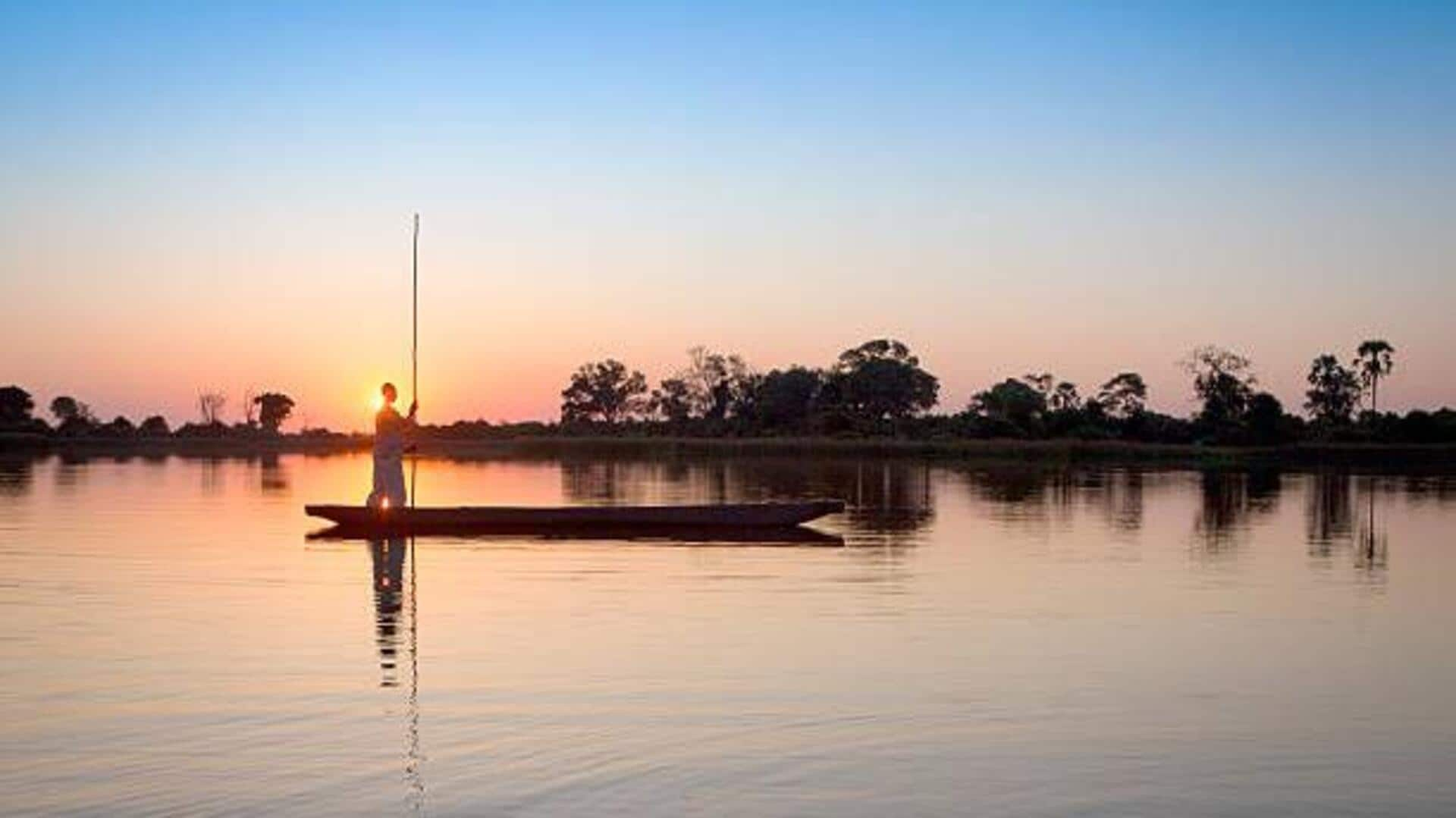
Mokoro rides in Botswana: A must-try adventure
What's the story
Exploring mokoro trails in Botswana's Okavango Delta is a unique kayaking experience. This vast inland delta is known for its rich biodiversity and breathtaking landscapes. As you paddle through these waters, you get an intimate view of wildlife and a chance to connect with nature. The traditional mokoro, a type of dugout canoe, is often used for navigating these channels, offering an authentic way to explore this UNESCO World Heritage site.
Timing
Choosing the right time to visit
The ideal time to kayak in the Okavango Delta is the dry season from May to October. During this time, water levels are perfect for navigating, and wildlife viewing opportunities are plenty as animals gather around water sources. The temperatures are also more pleasant than the hot summer months.
Wildlife insight
Understanding local wildlife
The Okavango Delta is home to a variety of species, from elephants and hippos to hundreds of bird species. While kayaking, it's essential to keep a safe distance from wildlife (for your own safety and that of the animals too). Guides can give you a great insight into animal behavior and how to have a respectful interaction with nature.
Preparation tips
Preparing for your kayaking adventure
Before heading out on your kayaking adventure in the Okavango Delta, don't forget to pack essentials like sunscreen, waterproof bags, and appropriate clothing. Book guided tours with operators who are well-versed in the delta's intricate waterways. Not only can these experts provide you with additional educational information about the ecosystem, but they'll also keep your experience safe from start to finish.
Cultural respect
Respecting local culture and environment
When visiting Botswana's Okavango Delta, respecting local customs and environmental guidelines is imperative. One must participate in local communities' lives in a way that demonstrates respect towards their traditions. Supporting eco-friendly tourism practices is crucial to the conservation of this delicate ecosystem. By learning about and following these practices, one contributes positively to the preservation of the area's unique biodiversity and cultural heritage.